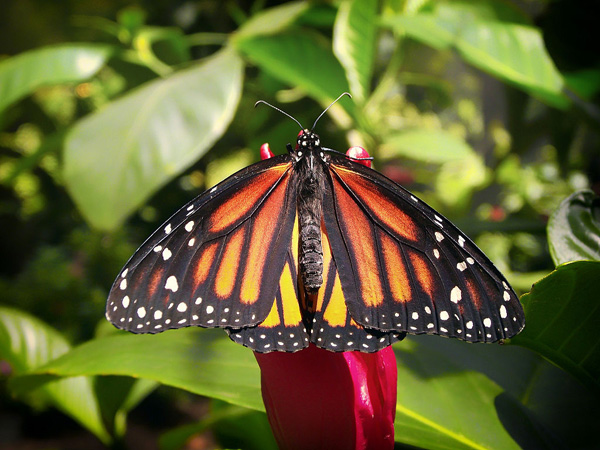- South Texas Students Meet Accordion Music Icons Los Tigres Del Norte In Edinburg Thanks To Khs America/Hohner Alianza Académica Initiative
- Fragile Planet Offers a Nighttime Wildlife Experience
- Falcons Soccer Off & Running
- Cameron County Receives Funds to Improve Two Parks
- Falcons Complete First Half of 32-6A
- School District to Help out Victims of California Wildfires
- Sand Castle Days Continued Despite Unexpected Weather
- Ready for District
- Discussion of Garbage Dumpster Rates, Agreements Between State & City on Highway Regulations, and More
- 31st Annual Shrimp Cook-Off is Right Around the Corner
Texas Mayors Step Up for Monarch Butterflies
- Updated: December 28, 2015
by Eric Galatas
SAN ANTONIO, Texas – Mayors across the state are raising the bar for Texas hospitality by pledging to make cities more welcoming for the embattled Monarch butterfly.
Austin, Dallas, Fort Worth and San Antonio are among the first cities in the nation to take the National Wildlife Federation’s Mayor’s Monarch Pledge, which officially kicks off today.
San Antonio Mayor Ivy Taylor says since the species’ population has declined by more than 90 percent since 1996, it’s time to act.
“That’s something that we can turn around and change in our lifetime, so that future generations can continue to marvel at the wonder of this species and their 2500-mile migration,” she states.
Texas mayors have agreed to take 25 separate actions to save the iconic species, including planting critical milkweed in public parks and school gardens and challenging the city’s neighborhoods to do the same.

Texas mayors are pledging to make their cities a safe and welcoming landing spot for the Monarch butterfly. Photo: Weimar Meneses/Wikimedia Commons
Cities will also review how and when public parks should be mowed to prevent the destruction of Monarch habitat.
Patrick Fitzgerald, a senior director with National Wildlife Federation, says the Monarch’s decline is mainly due to loss of summer breeding habitat in the U.S. and loss of winter habitat in Mexico.
He says milkweed, the only plant that nurtures monarch caterpillars, is also in short supply as a result of herbicides used in commercial agriculture and home gardens.
“The solution is really quite simple,” he states. “Across the country – whether it’s a resident or a mayor or someone who is running a park – we just need to find more places to create habitat and plant that milkweed for the Monarch butterfly.”
Monarchs travel 25 to 30 miles a day starting in Mexico and California and make their way to the East Coast, and some go as far north as Canada.
Fitzgerald adds – since the round trip journey takes place over several generations – Texas cities will be helping first generations in the springtime, and their great grandchildren flying back to Mexico in the fall.
Learn more at nwf.org.
